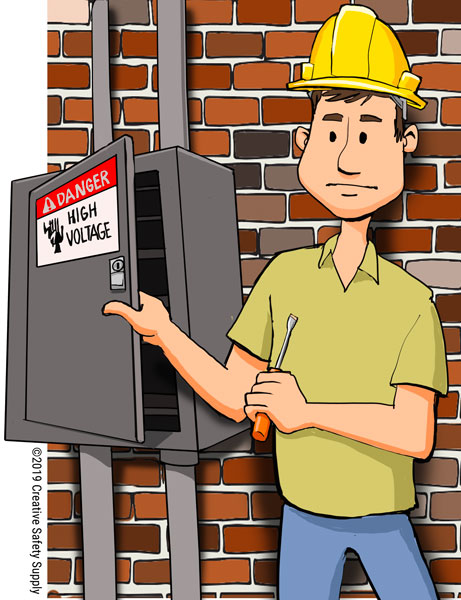

Symbols are a wonderful way to quickly communicate quickly and help communicate with non-English speakers. A safety alert symbol has been added as a key component to OSHA’s safety sign standard. This symbol, an exclamation point surrounded by a triangle, indicates a potential personal injury hazard, and should not be used for possible damage to equipment or machines.
ANSI has developed standards regarding symbols, which can be found under ANSI Z535.3: American National Standard for Criteria for Safety Symbols. Hazard alert symbols convey information related to hazards. These symbols will either describe the hazard, how to avoid the hazard, and often times the consequences of not avoiding the hazard. and if there is a shape surrounding the symbol, it should be yellow triangle. Prohibition symbols are used for items or actions not allowed and feature a red circle with a red diagonal going behind or in front of the prohibited symbol. ANSI also refers to symbols featuring information to convey equipment location, fire equipment location, and mandatory actions.
Symbols used on safety signs are usually black and white, simple in nature, and should be able to be understood almost immediately. Symbols should not be used alone on a sign but should also be accompanied by a more concise message. Even if a facility utilizes symbols that can be quickly identified, it is still important to train workers on the meaning of safety signs and symbols around the workplace. The use of safety symbols can be a particularly useful visual tool for workplaces with employees who speak different languagesHere are some examples of safety signs with symbols:

This symbol is commonly used for slipping and tripping hazards.

Many different types of required PPE can be represented with a symbol including boots, gloves, eye protection, etc.

This symbol is often used for crush risks or pinch points.
Similar Questions
- What does it mean to have OSHA/ANSI compliant signs?
- What do different colors of safety signs mean?
- What are types of signs in the workplace?
- What should I avoid in a safety sign?
- Why are safety signs important?
- Where are safety signs needed?
- What Are the most Common Types of Warning Signs in Industrial Settings?
- What are different types of construction safety signs?
- What are examples of fire safety signs?


